"She doesn't have anything to prove" - Captain Marvel's cast and crew on the makings of an MCU trailblazer
Brie Larson and co unpack what makes Carol Danvers tick, how she's going to fix the Snap, and her importance in a #TimesUp world

"Have you ever seen a little girl run so fast she falls down?" Asked Carol Danvers in Vol. 8, issue 1 of Kelly Sue DeConnick’s 2014 run of Captain Marvel comics. "There’s this instant, a fraction of a second, before the world catches hold of her again... a moment when she’s outrun every doubt and fear she’s ever had about herself, and she flies. In that one moment, every little girl flies."
It’s a speech that seems to sum up the DNA of Marvel’s cinematic clapback to DC’s successful Wonder Woman movie adaptation; the story of US Air Force ace Danvers, who’s genetically modified by aliens and bridges two worlds as a human-Kree hybrid. A super-strong superhero who outclasses her Avenger predecessors (“She will now be the most powerful character in the Marvel Cinematic Universe,” according to MCU maven Kevin Feige), can soar skyward shooting photon blasts, looks like the answer to Thanos’ world decimation... and yet is also flawed, self-doubting, emotionally vulnerable, relatable. An extraordinary woman who fears failure and doesn’t always get it right. Clearly a tricky balance to bring to screen. So how is Marvel ensuring that fallibility becomes box-office flight and not a stumble?
In a suite in LA’s London Hotel a few weeks before Christmas, our sister publication Total Film magazine suggests this fall/fly moment is the very sweet spot that co-directors Anna Boden and Ryan Fleck are trying to capture – and which Captain Marvel herself, Brie Larson, must portray for the 21st MCU instalment to really work. That suspended moment of beauty, the thrill, the novelty of it, the imperfect perfection that can only come from living by Danvers’ mantra of “higher, further, faster” and crucially, creatively taking risks.
“I love that. Oh my God, I’m going to steal that!” laughs Boden. “You really hit it on the nose in that quote. It’s about that space between having so much grit and so much determination, and trying so hard, that of course you’re going to fail sometimes. But it’s not about whether you fail or succeed. It’s about you trying so hard, and caring so much, and putting your all into it.” Well, she would know.
Though she and her directing partner Fleck are pumped about their film (Fleck is even wearing a Captain Marvel t-shirt), there’s also the unmistakable weariness of directors on the last lap – they’re in the final process of editing – of an all-consuming, hugely pressurised (from both business and fan POVs) project that cannot afford to fail. After all, as the Avengers: Infinity War post-credits scene told us, Captain Marvel is the last resort for reversing Thanos’ fatal finger click and restoring the Avengers franchise. And in a #TimesUp world, it’s never been more important that a female-fronted blockbuster lives up to considerable expectation.
DC’s Wonder Woman, with its critical love and $800m-plus box office, has set the bar high for breaking cinematic glass ceilings. Captain Marvel needs to smash it further as a vanguard for future MCU female-led movies (including the Black Widow standalone) and to contribute to creating a world where comic book stories about female characters are the norm, rather than the exception.
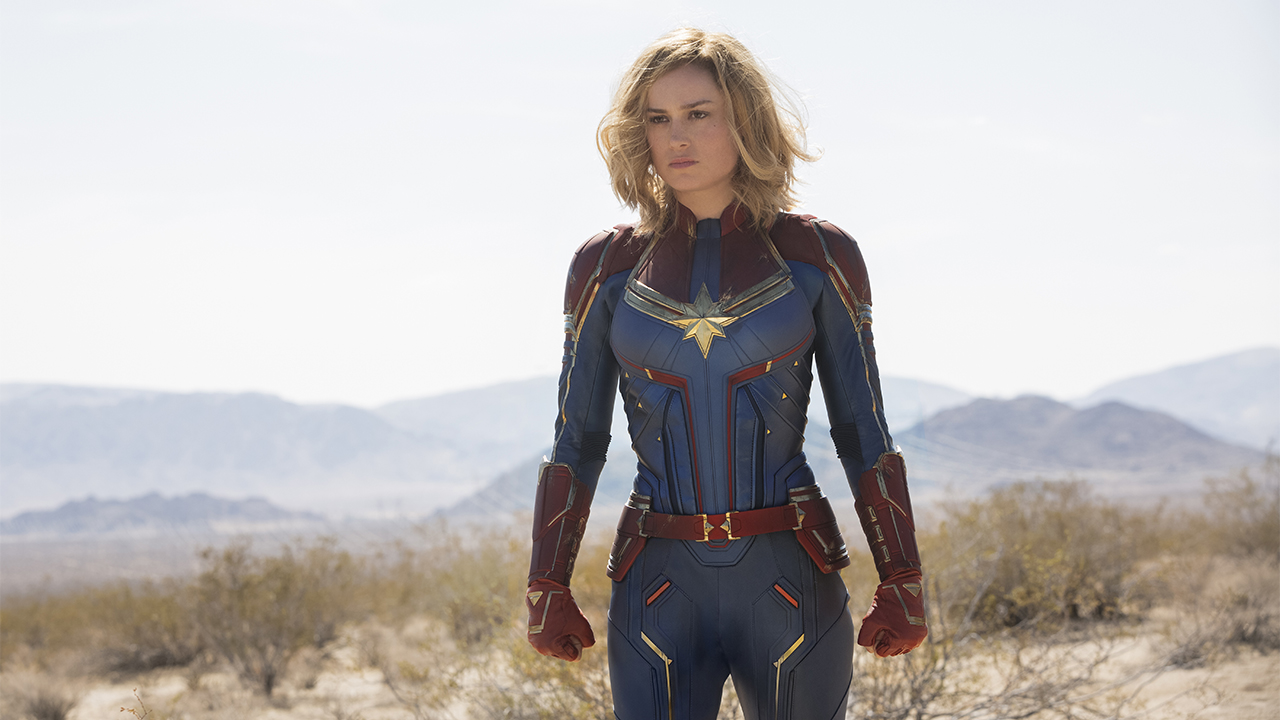
Though she’s been around since 1977 as Ms. Marvel (as Danvers since 1968 and as Cap since 2012), a Captain Marvel movie has been a long time coming. “We’ve always had powerful female characters and heroes in our films. But having a female superhero franchise title character for the first time feels overdue,” admits Feige. A female director of a Marvel movie is also long overdue, so Captain Marvel is transmuting the MCU both in front of and behind the camera.
Bringing all the latest movie news, features, and reviews to your inbox
Daunting then for Marvel newbies Boden and Fleck – best known for indies Mississippi Grind and Half Nelson. Attracted to Carol Danvers’ “grit, determination, humour, her friendships with other women, her heart”, the duo cut together a reel of music and clips to express their vision and began meetings with Marvel but knew that they were sailing uncharted territory.
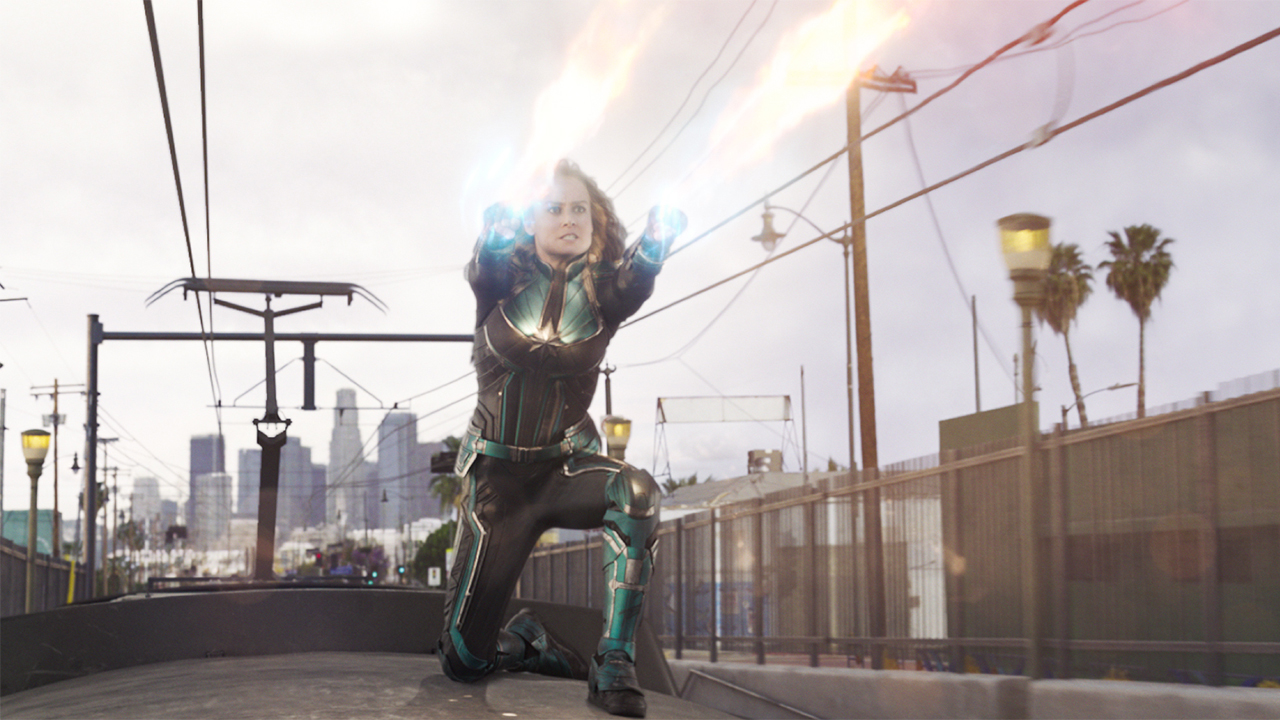
Captain Marvel's powers explained – what are they and where do they come from?
Anxious, they reached out to another director in their agent’s stable. “When we were first circling this movie we got a great piece of advice from [Black Panther director] Ryan Coogler,” recalls Fleck. “He said, ‘It’s multi-years of your life. You better damn well like this character. And you better be telling a story you want to tell.’” Boden nods: “There have been a lot of moments where we’ve been driven to sheer exhaustion. Just being able to be like, ‘Phew. We love this movie and we love this character’ has been really important.”
Equally important was their co-creator, the actor who would make the leap with them into the unknown. Oscar-winner Brie Larson was already onboard the project (she was cast in 2016) when Fleck and Boden were hired and, though a superhero virgin as well, by the time they began filming she had experience of making Avengers 4: Endgame under her red and gold belt. In the suite next door, Larson thinks back to her own big decision to jump out of indies and join a behemoth franchise.
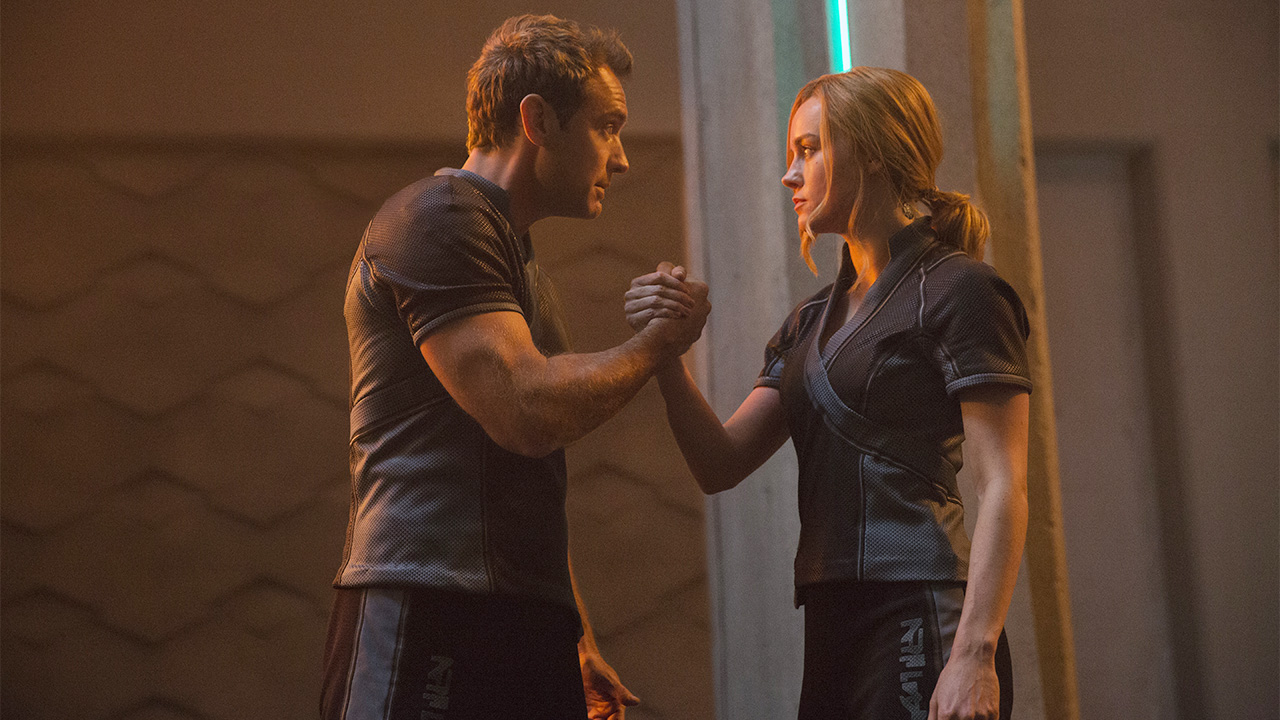
A self-declared wallflower used to relative anonymity, the 29-year-old was hesitant to become the shoulders on which a franchise balanced – and therefore, globally famous. If choosing a superpower, she tellingly says she’d plump for invisibility. “Would you just jump on it right away?” she asks Total Film. “Are you an extrovert? That’s a serious question. Do you enjoy lots of attention and potentially losing your privacy? There’s no running away. This movie’s going to play in every country!” Not for the first time she looks up at the huge character poster of herself that’s standing on an easel in the room, as if anchoring herself. She tells a story of recently being in Brazil in an art gallery and suddenly becoming aware that she was being observed and appraised as much as the art she was looking at.
It’s an experience she’s clearly uncomfortable with but equally aware that it’s part of a process she’ll increasingly have to get used to. “My consideration for doing it had nothing to do with my capabilities for playing the role, or whether or not I thought it would be a powerful and beautiful and important film. It all had to do with the stuff that comes with it,” she admits. “And a huge part of how I’m able to portray human characters is the fact I get to be out in the world, hang out with people, observe people and walk around, see the world, go to an art museum. How can I continue to give the work that I want to give if my very reality I’m living in is separate from yours? That was something I needed to take the time to think about. What is the sacrifice here when it comes to that?”
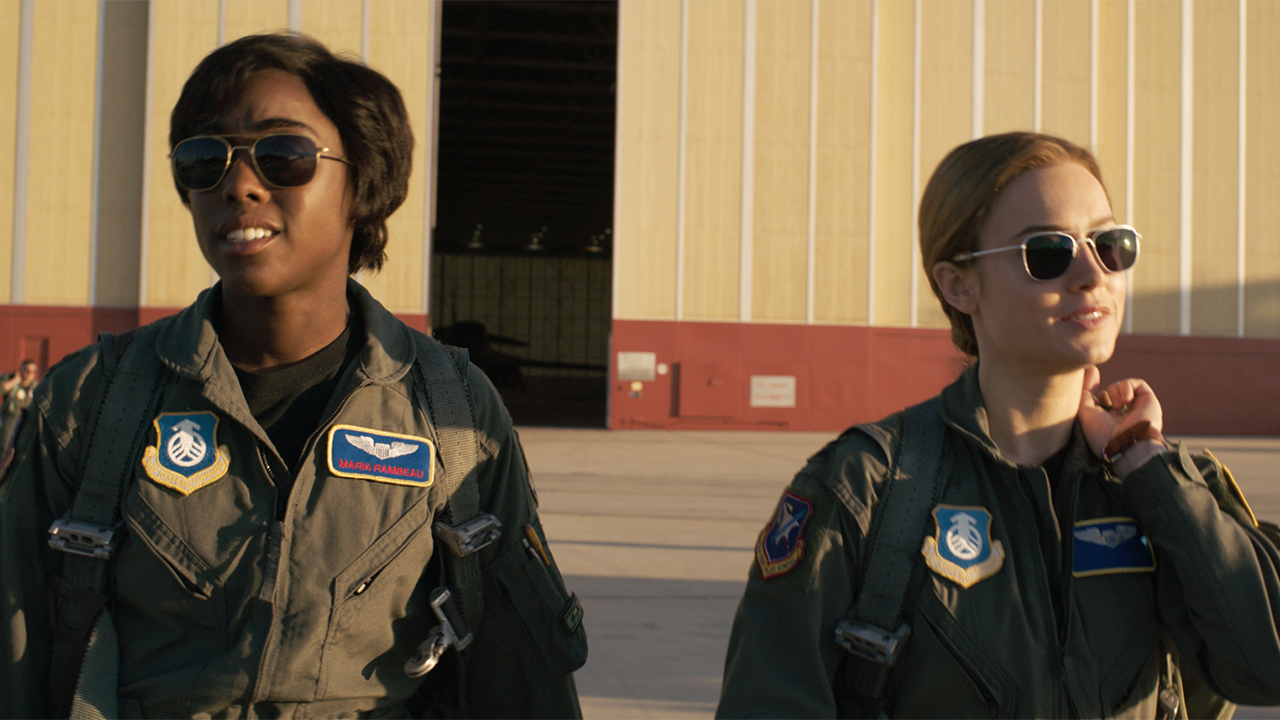
"A lot weirder than I expected" – The first Captain Marvel reactions are in
What was the trade-off, we ask? “I realised what they were trying to do with this movie was basically everything I ever wanted on this crazy, international scale. And I just felt like I needed to believe in myself – that I’m clever enough to figure it out.” Said like a true Carol Danvers, whose mirroring self-doubt amid her blossoming powers, struggle to understand her place in the world and that falling/flying imperative was also a draw to Larson.
“That was a huge part of what was important to me about the depicting of a female superhero on screen. She wasn’t this perfect icon, because I don’t think that that’s a realistic role model or image. And I have not made it to this point in my life because I did everything perfectly. I made it to this point in my life because I made a lot of mistakes – but those things have made me what I am today. We need women to feel comfortable taking risks, knowing that it might not work out. But we need them to know that the risk needs to be taken. This film represents the struggle as well as the success.”
Dial M

Larson also sought advice from those already in the superhero world – though not Wonder Woman’s Gal Gadot: “We did hang out once but we never talked about it.” Having worked with both of her Captain Marvel co-stars Clark Gregg (Hoots) and Samuel L. Jackson (Unicorn Store and Kong: Skull Island) plus her Endgame team-member Chris Evans (Scott Pilgrim), she looked for perspective on joining this exclusive club during the gathering for the MCU 10-year celebration photo and during filming on Endgame. “I was able to go around and be like, ‘Hey, I’m new. What should I know?’” she smiles.
Jackson, feet up on a sofa in a suite down the hall, has no such qualms about Larson handling the heavy load of the Captain Marvel mantle in all its forms. He peers over his clear, round glasses and shrugs when asked what advice Nick Fury himself gave the newbie. “All I told her was, ‘Look, you will give a Brie Larson performance like you always do. You give it your honesty, you give it your truth. The rest of it belongs to the Marvel machine. There’s nothing you can do to make it any better than it’s going to be, other than give it your Brie-Larson-honest best. Which is why they hired you. So do it.’”
He also warned her that this was going to take graft as well as cerebral consideration. “It’s an enormous amount of work. You say, ‘Yeah, that sounds like fun,’ then when you go to your first workout, it’s like, ‘Oh my God, what have I signed up for?’ She used to send me her workout videos – she was pushing a Jeep up a hill one day! You change your diet. Your schedule changes. You’ve got to get more rest than you normally have. All of a sudden, you’re back to kiddie sleeping hours. You’re like, ‘If I can get to bed by eight, that’d be good...’”

As evidenced by Larson’s social media output, she didn’t scrimp on the sweat for her art, training for nine months before shooting began – strength and cardio combined with taekwondo, kickboxing and judo. And that was before the wire work and stunt prepping. Quite the culture shock for an asthmatic woman who admits to previously getting puffed walking up the stairs. “I didn’t know how far I could go,” she grins, “I just wanted to get as strong as I could because it wasn’t enough for me to just put on a costume and stand in a pose. I hit the six-month mark of training and was able to deadlift 225lb, hip thrust 400lb. That’s not something I felt was possible in me. It completely changed the way I relate to myself, to my body, to how I interact with the world.”
The physicality of the role was a “real game-changer” for active feminist Larson, who is a founding member of #TimesUp and vocal during the #MeToo movement. “Because body image is such a huge part of being a woman I always just wanted my body to be eliminated from the conversation, I just wish my body would disappear and it would be something that no one noticed or cared about,” she says, wonder colouring her voice. “And this was the first time where I felt like I was able to learn how to use my body as a tool, almost like it’s a paintbrush, something that depicts emotion.”
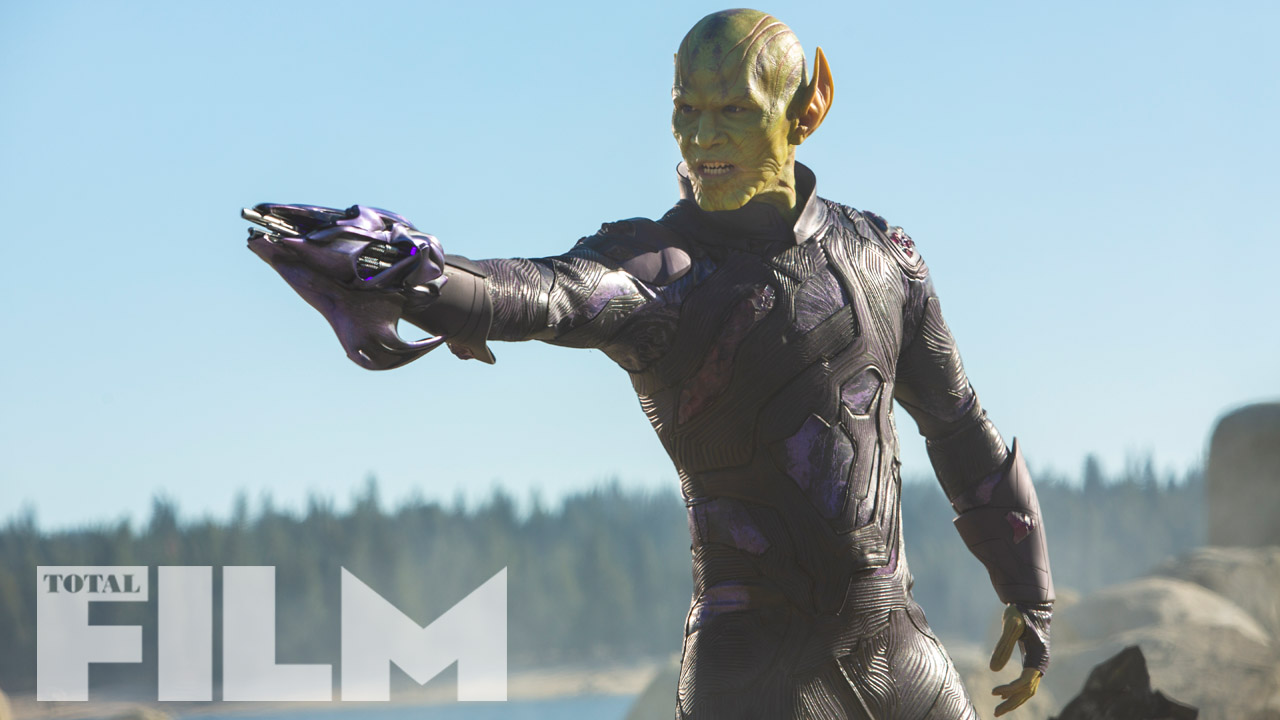
That reconciliation of feminism with body awareness wasn’t the only aspect of her journey to subvert gender tropes inherent in a multi-billion dollar franchise and the media circus. Larson is determined to use her new status as a platform to promote gender equality in a tangible way – urging female journalists to cover the film in a majority male industry, wearing female designers, ensuring diversity and parity in every level of production and promotion. And she’s keen to show the work that goes into her public image. “It took having a professional trainer and nutritionist, and being aware of trying to eat as clean as possible – even though I have a real weakness for mozzarella sticks!” she says of her transformation – just check out her Instagram for proof of that mozzarella addiction.
“I think we idealise particular women in my position all the time, but we don’t understand the minutiae of what it takes to get to that. Like today, I don’t look like this normally,” she gestures to the killer heels, navy pinstripe suit and perfect hair and make-up. “It takes a team of people. They’re all artists, but it’s also important to talk about the reality of the situation that I’m in. These are all ways that I can show there are changes that can be made, and part of why I can have the leverage to do that is because of this [role]. I feel it’s incredibly important, especially because this movie is inspirational – but we need actual action to come out of something like that.”

Every new Marvel movie coming in 2019 and beyond
That actual change resulted in Anna Boden’s appointment as Marvel’s first female director. “Since they’ve hired me, Marvel has hired two other female directors,” Boden says with pride. And there’s a pleasing symmetry that the writer of the comics that have the greatest influence on this iteration of Captain Marvel is Kelly Sue DeConnick, who gave Carol Danvers the Captain moniker after years of being Ms. Marvel.
Though plot details are wrapped in the usual MCU levels of secrecy (“It’s like we know what’s in the Pulp Fiction box,” laughs Fleck), DeConnick’s run has fed into a tale of Marvel being introduced to audiences with her superpowers already fully fledged in the ’90s and trying to reconnect with her past while also discover her place in the world(s). “It’s a mystery, an investigation,” says Boden. That place involves a fearsome war between alien nations – the shapeshifting Skrulls (led by Ben Mendelsohn’s Big Bad, Talos) and the Kree – which is spilling into Earthly dimensions. And attracting the attention of also-fledgling Nick Fury and Agent Coulson – Fury still sporting two eyes and S.H.I.E.L.D. not yet up and running.
Cat out the bag

This, of course, isn’t Samuel L. Jackson or Clark Gregg’s first MCU outing – they’ve appeared in the franchise since 2008’s Iron Man – so they were digitally de-aged and required to channel a youthful wonder at discovering a badass superhero crashed through the roof of a Blockbuster store.
“I just made him stupid,” 70-year-old Jackson says of playing a forty-something Fury who he reckons looks like him during The Negotiator. “Or naïve. How about that? He’s sitting on a desk, in some alphabet soup organisation, trying to do a threat assessment about what’s going on in the world not knowing anything about extra-terrestrials and that there might really be some. He’s not so world-wise and all-seeing as the Fury we normally see.” But he stresses that Fury’s green-ness is what provides good bantz with Marvel as they both work each other – and themselves – out. Jackson likens it to Lethal Weapon. “She saves him, he saves her. They bond in a very interesting kind of way to the point that they’re almost one unit in the way that they think, move, talk and laugh. And I’ll just say that we have a knock-down-drag-out-buddy-bonding fight.”
It’s not just Danvers/Marvel that Fury is bonding with either; the superhero’s feline-esque sidekick, Chewie – renamed Goose for the film – gets some serious ear-tickling from Fury. “I’m sure I’ll become the subject of millions of cat memes just because [of] my relationship with Goose,” nods Jackson. “Throughout the movie I’m hanging around with Goose a lot. And he was a nice cat – Reggie, the actor cat.” (Larson couldn’t get in on the kitty cuddling as she’s allergic to cats.)

Set as it is way before the catastrophic events of Avengers: Infinity War, it’s clear Captain Marvel will offer some clues as to why she’s the key to bringing the dead back in Endgame... but of course, nobody’s saying. “I guess we might figure out that she can do things that nobody else can do,” teases Jackson. “She can time travel so maybe she can get ahead or behind or whatever, and figure out what all that is. The fact I have the pager 20 years later [seen in Avengers: Infinity War’s post-credit sequence] – it gets addressed in an interesting sort of way.” Larson shrugs with a mischievous smile: “I’m coming up. They’ve pager-ed me. So maybe it’s going better. I’m just part of this larger journey, but I do feel like it’s natural that at a 10-year mark there’d be some endings and some beginnings.”
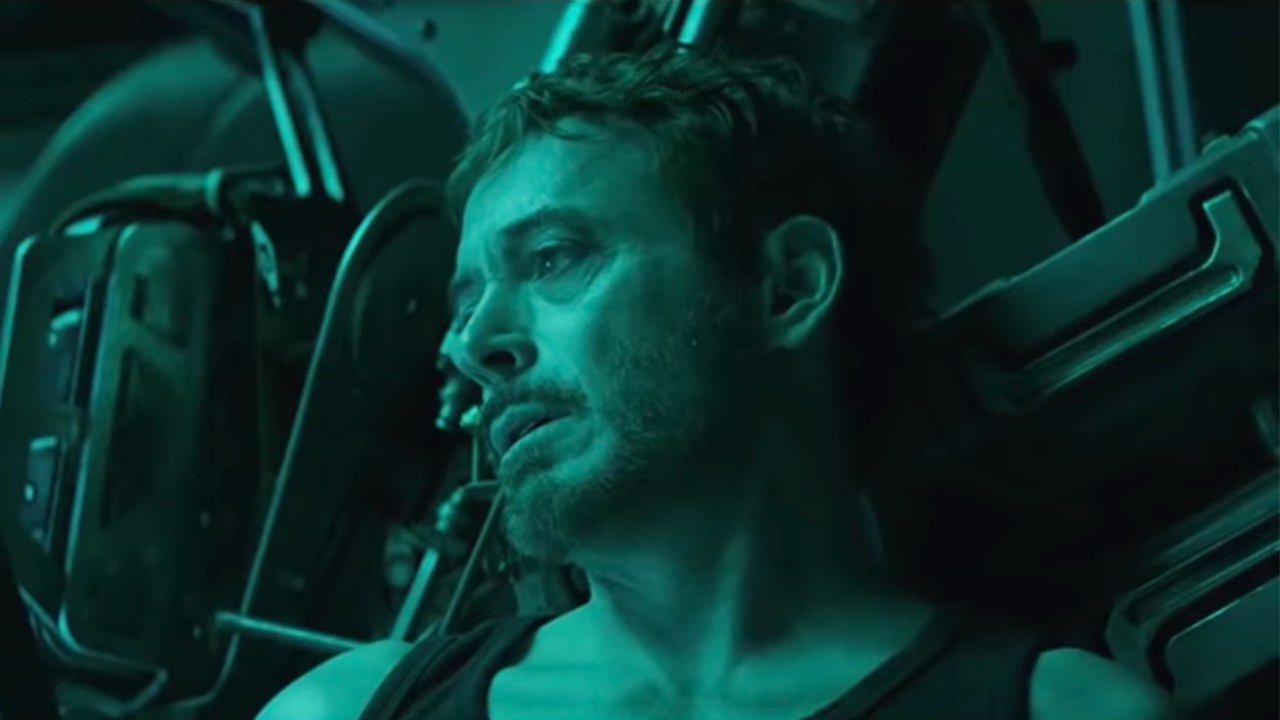
The best Avengers 4 theories explained, analysed, and explored
What Larson can talk about is the training she undertook at Nellis Airfield in Las Vegas, meeting real-life pilot ace Brig. Gen. Jeannie Leavitt (the US Air Force’s first female pilot and first female wing commander) and getting to experience the Gs in a F-16 fighter jet. “We did barrel rolls and dogfights, and then I had to simulate it again in a fake plane rig on set. I got to 6.5G in that plane so knew what it was really like. I knew where to turn my head and how to manoeuvre the plane to go into a barrel roll.”
Some elements will not be repeated for screen however. “We simulated a dogfight and I was like, ‘What are the chances I am going to puke?’ and they are like, ‘It’s 50/50 – don’t drink margaritas the night before and you should be fine.’ So I did not have a margarita, we got up in the air and I started the dogfight... I was flipped in every direction possible and immediately started puking. I puked for most of the flight!”

That’s not the only physical discomfort Larson’s happy to discuss. Like many before her, she’s not a fan of the suit. “It’s not comfortable, it takes two people to get me into it and it’s a 30-minute process to put it on,” she grimaces. “It makes going to the bathroom a bit of a thing – it’s a team of five people just for me to go to the bathroom. That was the part that, when the movie was done, I was the most excited about. I was like, ‘I can go to the bathroom by myself! I don’t need to make an announcement!’” But, she counters, everything – the lack of privacy and mozzarella sticks – is ultimately worth it. “I really want to push myself to the limit with this – I wanted to give everything that I had to it, to be strong. To me, strength isn’t really forceful. The most strong, powerful people in my life are quite chill on the outside, because they don’t need to prove anything. She doesn’t have anything to prove.”
This isn’t necessarily true of course. One Wonder Woman does not a revolution make – Captain Marvel must prove that a successful female-led superhero film is not just a fluke. Larson is hopeful that she and her character can contribute to real change in the industry – especially as her picture is released, poignantly, in the same month as International Women’s Day.
“I’m grateful to be part of this opportunity of opening the door. But I don’t think I should be anybody’s role model – if it’s of value to a young girl or woman or a young man, then that’s awesome. But I want to be aware of the fact that just because this movie came out, it doesn’t mean we’ve answered all the questions and that feminism is solved.” She looks again at that poster. “I’m kind of carrying the torch for a sec. It’ll get passed onto someone else after.” We very much hope so...
Captain Marvel opens on March 8, 2019. This feature originally appeared in our sister publication Total Film magazine, issue 282. Pick up a copy now or subscribe so you never miss an issue.
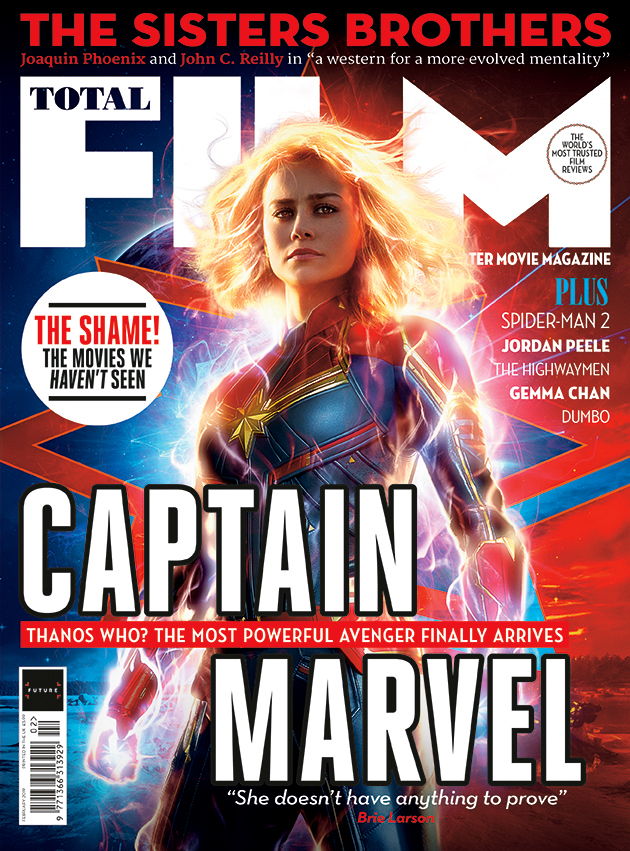
Jane Crowther is a contributing editor to Total Film magazine, having formerly been the longtime Editor, as well as serving as the Editor-in-Chief of the Film Group here at Future Plc, which covers Total Film, SFX, and numerous TV and women's interest brands. Jane is also the vice-chair of The Critics' Circle and a BAFTA member. You'll find Jane on GamesRadar+ exploring the biggest movies in the world and living up to her reputation as one of the most authoritative voices on film in the industry.


